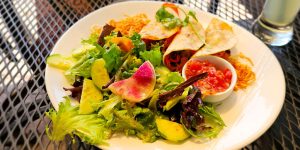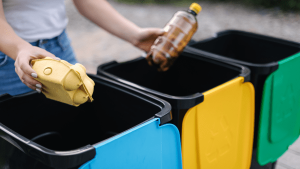What You Need to Know about a Kava Ceremony
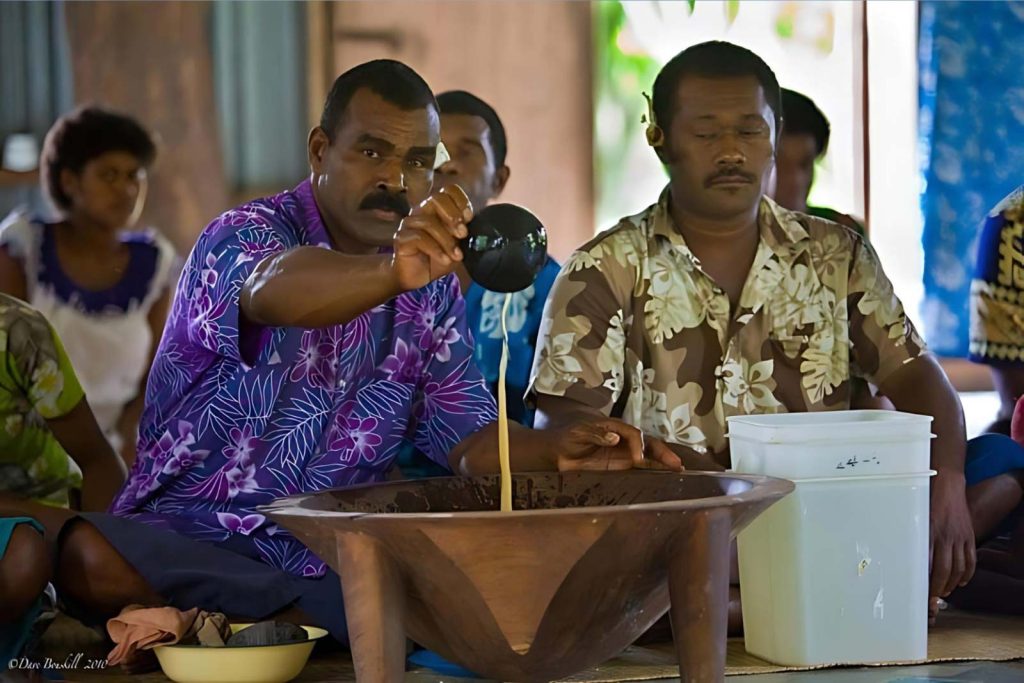
Advertisement: Click here to learn how to Generate Art From Text
You will likely attend many Kava ceremonies when visiting the South Pacific. Pacific Islanders follow this tradition since centuries.
This cultural ritual provides a unique insight into Fijian tradition, while fostering community and connections. In this guide, we’ll walk you through everything you need to know about what to expect during a kava ceremony in Fiji, ensuring you’re well-prepared to enjoy this unique cultural experience.
It can be a little confusing when you don’t know what to do, at a Kava ceremony but don’t worry, the Fijian people are very patient and will talk you through the process.
What to Expect At A Fijian Kava Ceremony
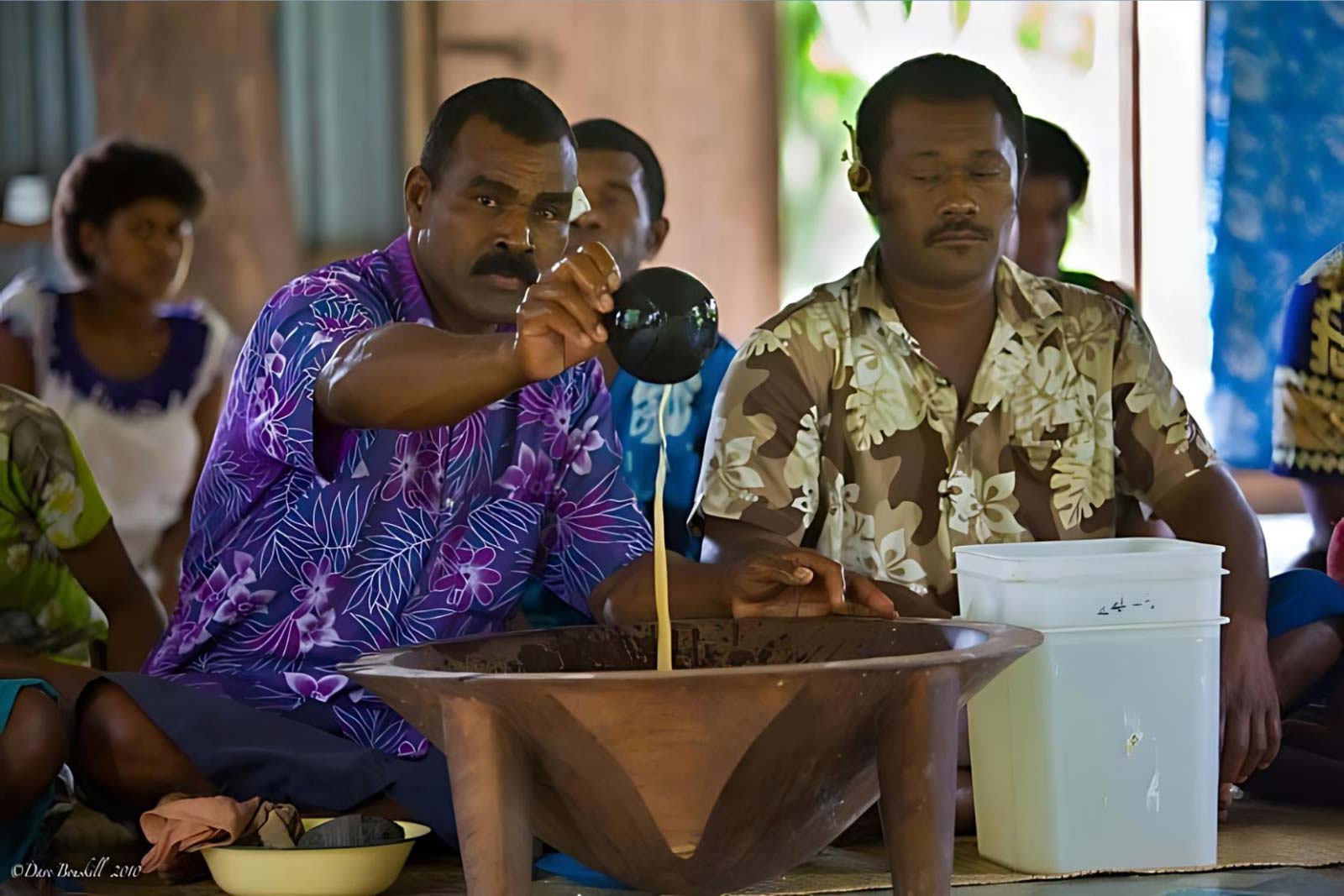
The following are some of the ways to get in touch with each other Kava ceremonyThis is a traditional ritual that involves drinking kava. Kava is a beverage made by crushing the root of the yaqona plant (or kava). We have participated in several kava ceremony in Fiji,But they are celebrated all over the South Pacific. We will discuss the Kava ceremonies of Fiji in this post, but other islands also follow the same steps.
The ceremony has a deep-rooted cultural significance in Fiji and is often used to mark important events, celebrations and social gatherings. Kava has a calming effect, which promotes relaxation and social bonding between participants.
It is important to respect Fijian cultural traditions when participating in a traditional Kava ceremony. We will go over the steps and rules that you should follow.
What is Kava?
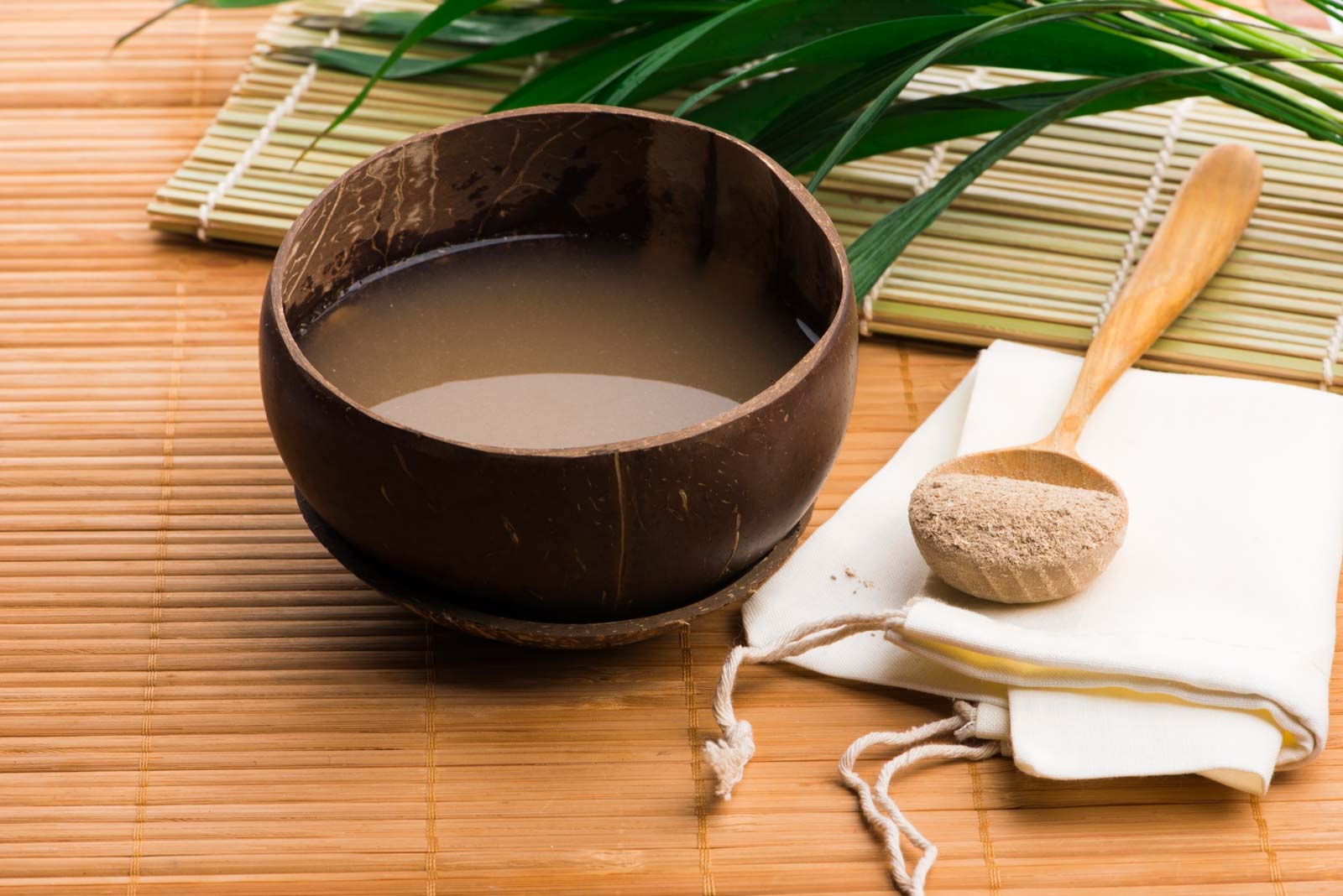

Kava is also known as kava kava. It is a traditional drink that is made from the roots of the Piper Methysticum, a plant native to the South Pacific Islands. The drink is used in many Pacific cultures including Fiji, Tonga Samoa and Vanuatu for its sedative and anesthetic properties.
Kava Ceremony Etiquette
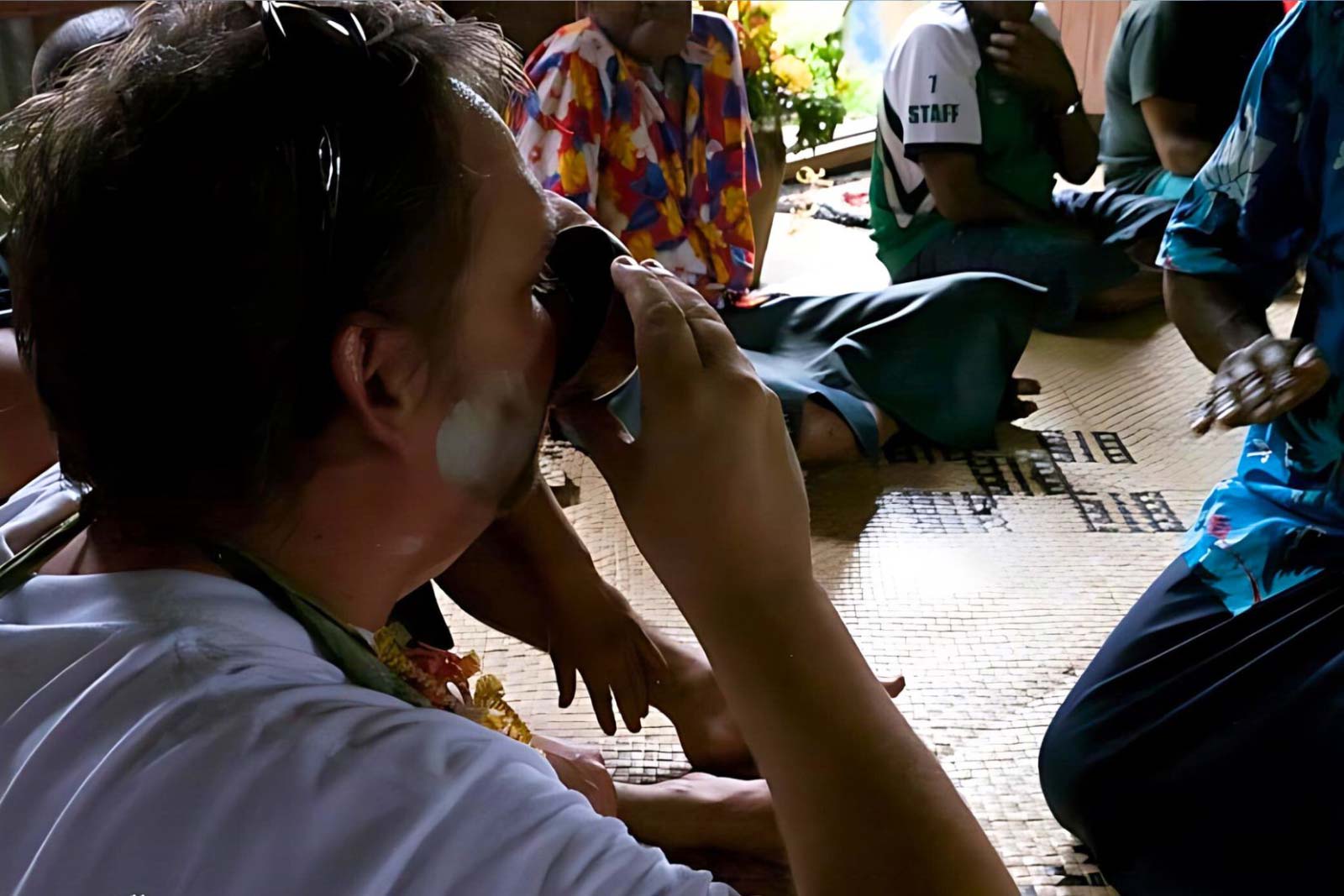

Kava traditions in Fiji follow the rule of bringing a yaqona (kava root) as a gift when entering a village. You can purchase a kava in the local market. This root will be crushed and liquidized, then put into a bowl of kava for guests to enjoy. Before drinking from a communal pot.
In recent years, the kava ceremonies changed. Now they scoop their own bilo from the large communal dish. (half of a coconut).
The Kava Ceremony Process
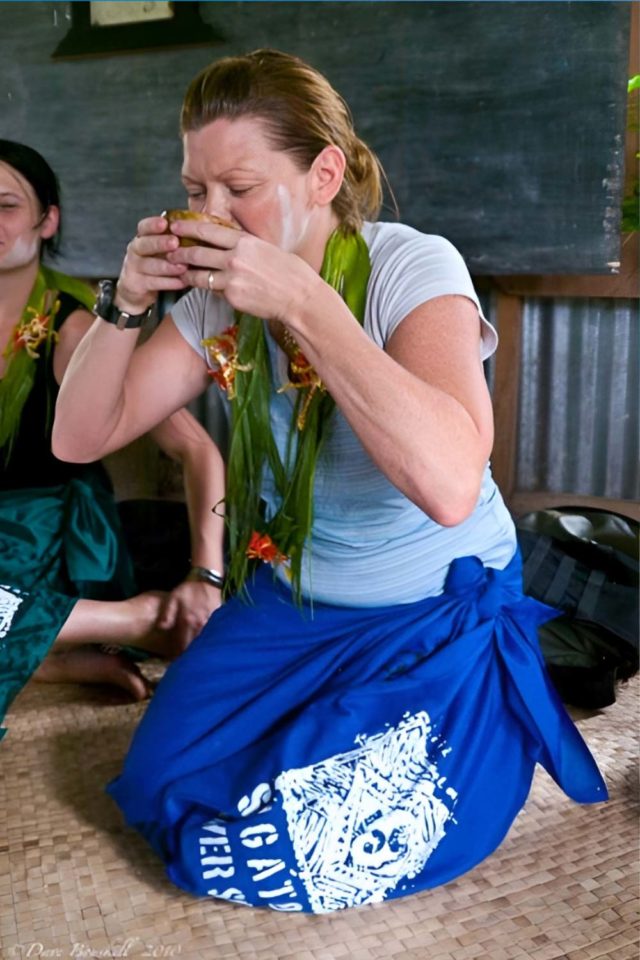

Wear conservative clothing to show respect. Women should always dress modestly and wear a sulu. Men should also dress with respect. In Fiji, many men wear sarongs. You can too! Men should at least have their shoulders covered. It is acceptable to wear long shorts or short-sleeved tops that cover the shoulders.
If you don’t have a sarong a long skirt will work. Long shorts can also be worn. But I always pack a sarong I tie my belt around my waist whenever I enter a village.
The oldest man enters first, followed by the other men and finally the women. When entering the home, remove all hats and sunglass frames. Your leader should then greet the host first.
Welcome Ritual
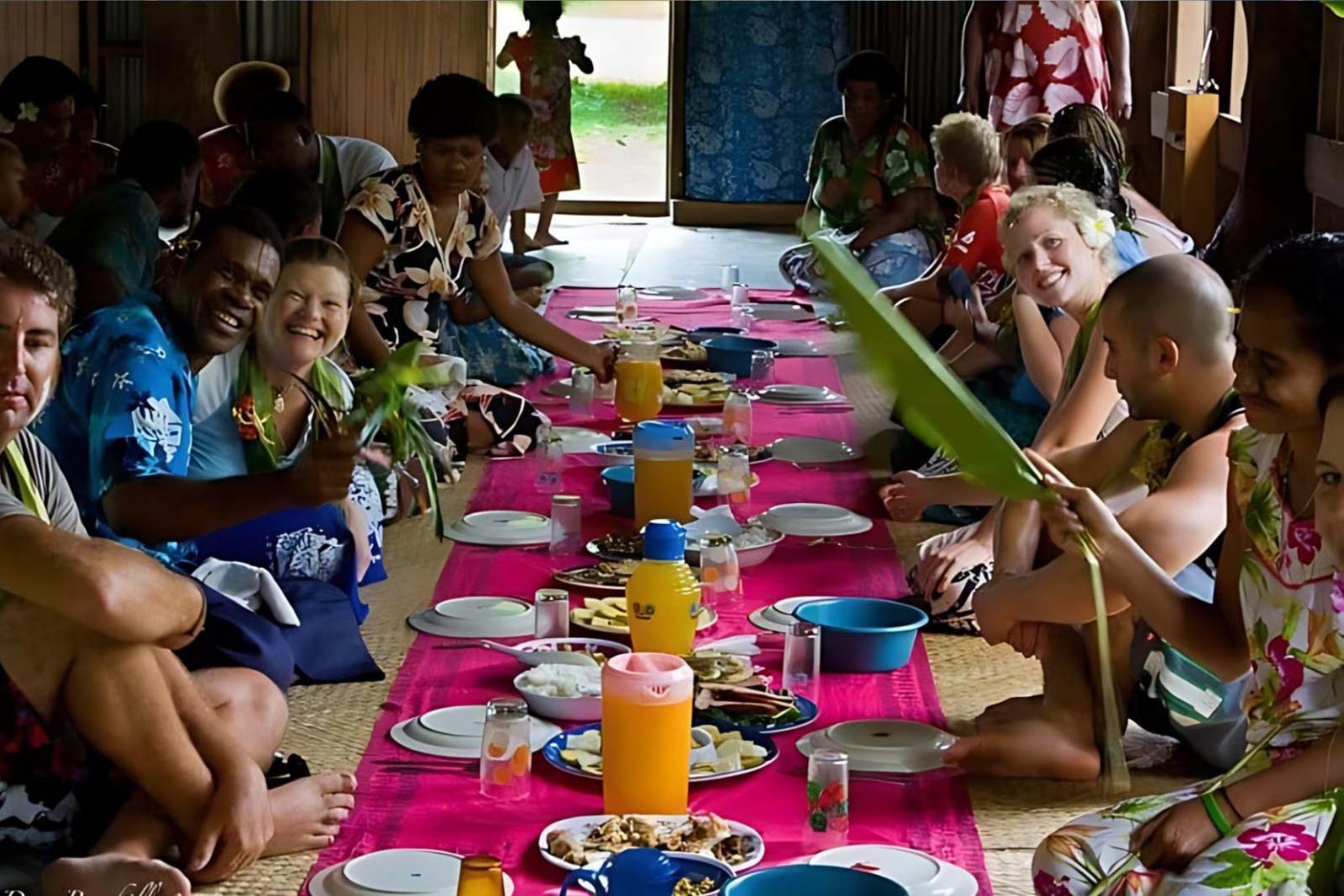

The kava ceremony usually begins with a welcome ritual. The village leader or chief welcomes guests. Before the ceremony starts, the chair explains it while participants sit in a circle with their village chief at the centre.
When the ceremony starts, the chief (the oldest member of your group) will present the root to the village chief.
The ceremony starts when the villagers grind and strain the kava through a cloth into a large wooden vessel called a tanoa. It is then placed in the middle. It is then offered to your group’s chief.
After your chief has had a sip, the village’s executive head drinks the Kava next.
Once the two party leaders have finished their drinks, they are then offered to the rest according to rank. The women drink first, then the men.
The Serving
The kava is usually served in a coconut-shell cup called an bilo. The cup will be presented first to the chief/eldest member and then passed on according to rank. After receiving the kava, you should clap twice, drink the whole cup, then clap 3 times. This ritual is repeated till everyone has had a turn.
Drinking Kava
There are certain traditions you should follow when the kava arrives. Follow these steps when you drink kava.
You will have the option to choose from “high tide,”The following are some examples of how to use “low tide”If you ask for a high tide, they will give you a full-sized cup. If you request a low tide they will give a half-cup of Kava. Locals are more likely to give you the full cup as a sign of respect.
Follow these steps to have a good time when you receive the coconut!
- Clap your hands with a cupped-hand making a hollow noise
- Yell: Bula!
- Drink in one gulp
- Clap three times while cupping your hands to create the hollow sound.
- Say: “Mathe”Pronounced maw-they
What Does Kava Taste Like? Kava tastes like muddy, muddy water. There is also some bitterness. It is how should you say…an acquired taste.
What you will feel like after drinking Kava
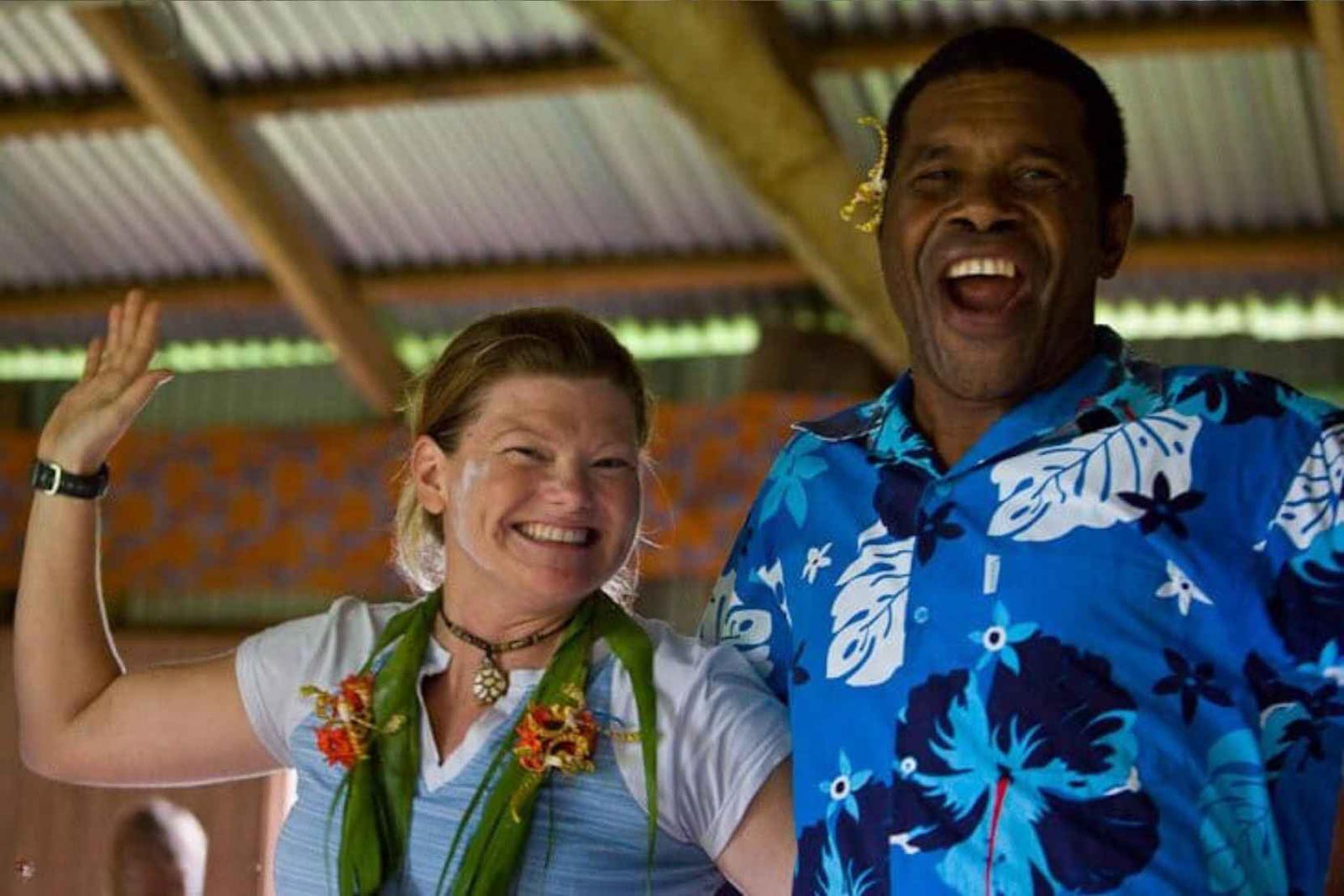

Kava has an earthy taste that can cause a numbing feeling in the mouth. You will likely feel tingling or numbness on your tongue after drinking Kava. Kava is a mild narcotic that is known to relax people.
It’s known for its calming effects, promoting a sense of relaxation and well-being. You are guaranteed to have a good night’s sleep after a couple of high tides and you will wake up feeling well-rested and energized.
Fijian’s are known as some of the most happy people on earth and we believe that the Kava has something to do with it.
Kava was once sold as a relaxant in the United States in pill form at one time, but they couldn’t capture the exact formula of drinking it fresh from the root.
As the ceremony proceeds, participants often engage with storytelling, singing, or dancing, creating a sense community and connection.
After the Kava ceremony – Celebrations
After the Kava ceremony, you can start the celebrations with song and dance. The Kava ceremony unites two families and they become one after the ceremony. After the Kava Ceremony, there’s a big celebration with dancing and music.
It’s a wonderful way to interact with the local villagers. Don’t be shy, join in the dancing. Fijians are friendly and welcoming.
After the Kava Ceremony, visitors are welcome to enter the village and explore it as they please.
What Islands perform Kava Ceremonies
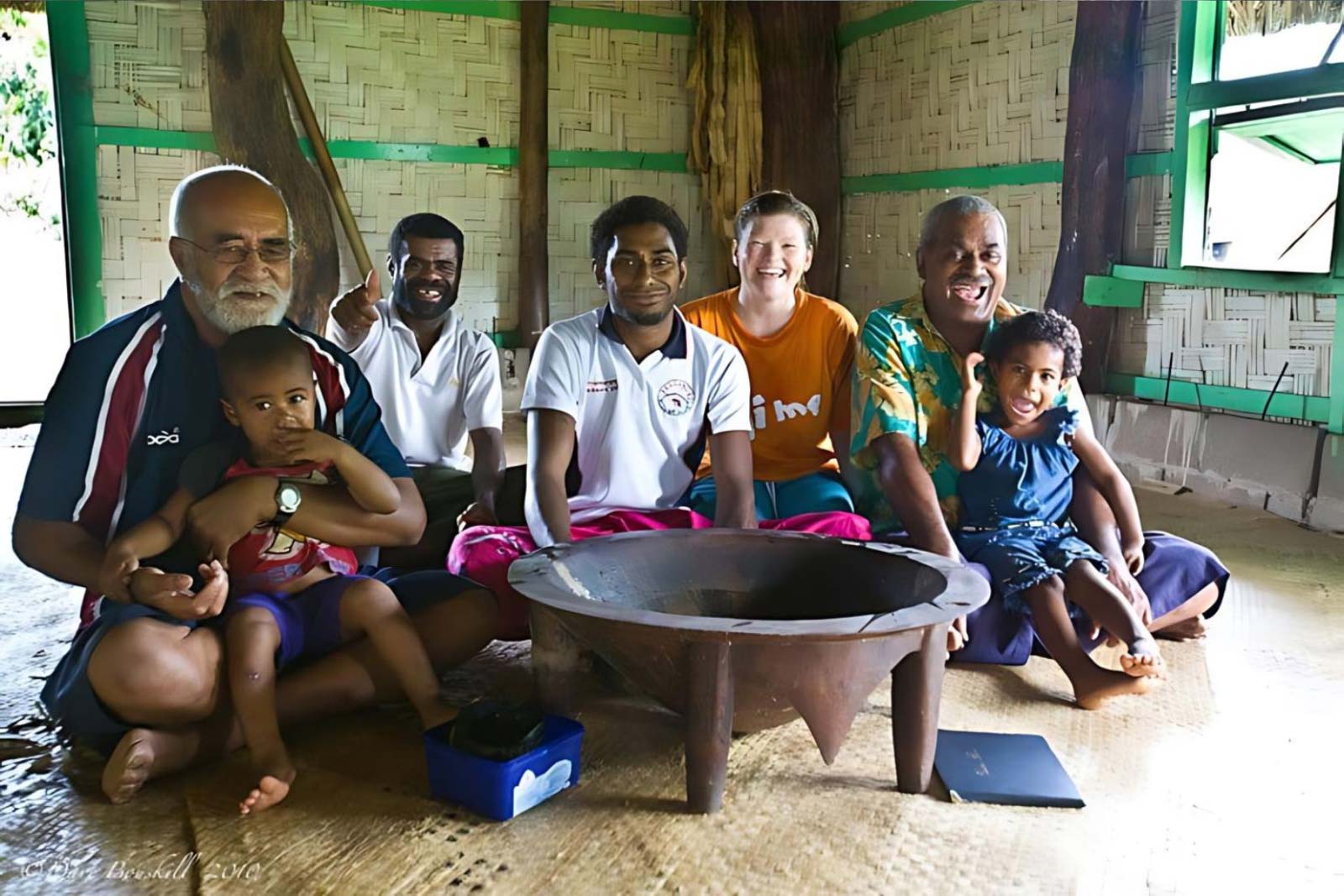

We participated in Kava Ceremonies in Fiji. However, they are a part of the culture on several islands throughout the South Pacific. Each region has their own unique traditions for preparing and drinking kava. Here are some of the most popular places to experience authentic kava ceremonies.
Vanuatu, or Vanuatu, is often referred to as the birthplace of Kava. During social gatherings and community events, kava plays a major role. The kava bar, or nakamalsLocals and tourists alike can enjoy this drink in a social setting.
Tonga, Samoa and Papua New Guinea also hold Kava ceremonies. However, the rituals of Papua New Guinea differ from those in other Pacific Islands. Hawaii has also started to embrace kava, and kava bars are places where people can enjoy kava in an informal setting.
Travel to Fiji:

‘ Credit:
Original content by Theplanetd.com “Everything You Should Know About A Kava Ceremony”.
Read the complete article at https://theplanetd.com/kava-ceremony/


